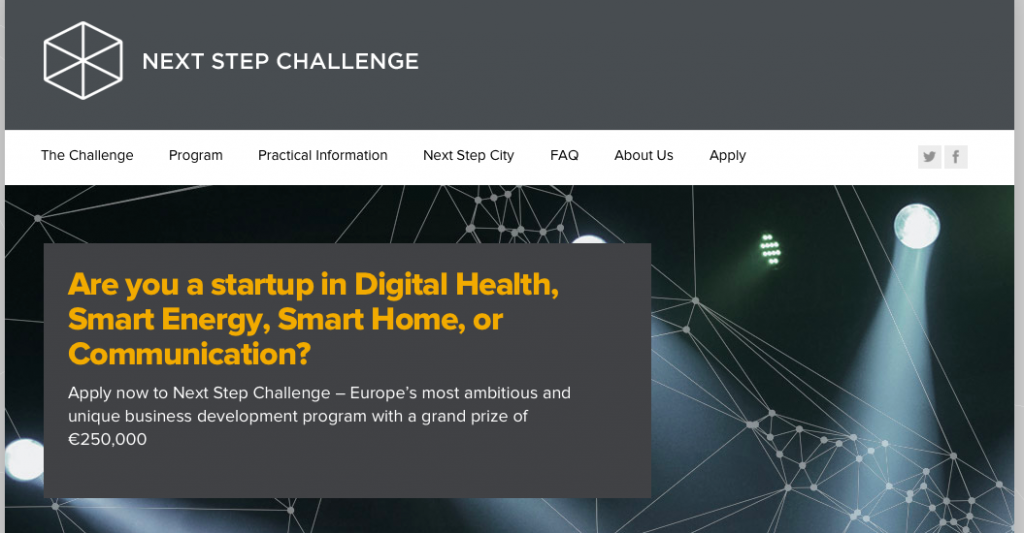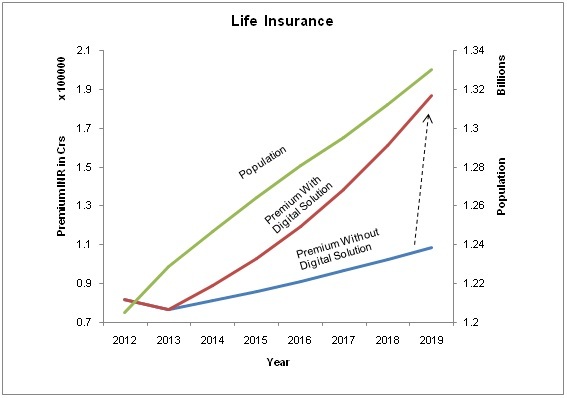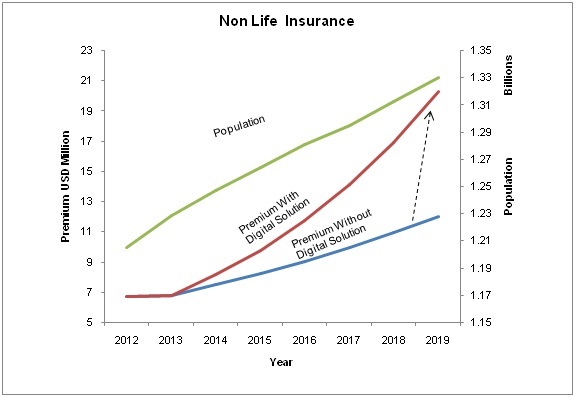“Flipkart raises fresh round of $1b”, “Wipro sets up $100m VC fund to invest in start-ups”, “Ratan Tata considering a personal investment in Snapdeal”, “Druva raises $25 million in a fresh round of funding” Entrepreneurship ecosystem in India currently seems to be buzzing with multiple investment rounds, acquisitions and launch of new funds. A big driver of this activity is the eCommerce boom that India is seeing currently with Flipkart.com and Snapdeal.com leading the race. Though the increased activity is going to benefit the ecosystem as a whole, the service sector seems to be getting more attention.
This brings us back to the question that we have been asking many times – “Why India does not have many billion dollar technology product companies?” There have been multiple debates and discussions around this topic for years. So I set out to do an in depth research using primary and secondary sources to find out what people say and how much of that is validated. Over two months, I spoke with multiple founders and players in the Indian start-up ecosystem and also read through many articles, discussion forums and interviews to find out what issues product companies face in India.
As per the research findings, following key issues emerged:
- Difficult to penetrate Indian market especially the enterprise and government sectors.
- Small early adopter market in India.
- VC and angel investments are not directed to product companies due to reasons including risk averse investors, lack of fundable companies that can show traction immediately and no good way to discover good product companies.
- Difficulty attracting and retaining talent.
But how do we resolve these issues? What have some of the successful companies such as InMobi, Druva and FusionCharts done to circumvent some of the above problems? What can we learn from other start-up ecosystems around the world?
Research indicated that the above issues cannot be fixed by one entity. Instead the entrepreneurship ecosystem as a whole needs to take multiple steps to address the specific problems. Some of the recommendations to address the above issues and move towards building billion dollar product companies from India have been discussed below.
Difficult to penetrate Indian market
Ecosystem players can play a huge role by bridging the gap between product start-ups and enterprise and consumer buyers. One way to do that is by bringing Enterprises & start-ups closer. Many of the B2B product start-ups interviewed for the research mentioned difficultly in penetrating the enterprise market as one of their biggest pain points. iSPIRT has taken the lead here and had recently organized a meet-up – InTech50 of product startups with Chief Information Officers ( CIOs) of global companies such as Citigroup, Procter and Gamble Co. etc. These meet-ups called “Swayamvars” are curated events where a large company can meet 5-15 startups it can potentially partner with. We need more such initiatives to bridge the gap.
We also need to increase the trust between start-ups and enterprise customers. Enterprise buyers often are reluctant in trying products from start-ups as they have had few bad experiences in the past. To solve this issue, start-ups should be educated on how to approach enterprise customers, how to draw contracts and what level of service to offer. On the other hand Enterprise companies need to be educated on the pros & cons of buying from start-ups to set the expectations right. They also need to be trained on how to evaluate a start-up vendor.
It is also essential to open the doors to start-up firms to apply for government contracts. Start-ups are often left out of the government contracts due to bidding criteria that favor large firms. Government should work towards either relaxing the requirements for bidding for government contracts or initiate a separate program to award contracts to start-up firms. Another way to resolve this issue would be to allow companies to compete for contracts based on their innovation and not be stifled by impossible high qualifying hurdles.
Small early adopter market in India
India currently has an urban population of 27.8% with an internet penetration that stands at 20%. The country is still evolving especially from technology perspective. Increase in early adopter market would take its natural course of time as more people start adopting technology in their daily lives and are open to try new products as seen in US and other markets. Though the issue of small early adopter market cannot be solved directly, in the meantime, more opportunities can be created for Indian product companies to sell to the global world. If we look at Israel startup ecosystem which has a small local market, we notice that they focus on US markets solely. India also can gain advantage of the large markets in US & Europe by creating avenues for start-ups to sell to global markets. These avenues could be either in the form of international treks taking selected Indian companies to US & Europe to meet potential buyers or bringing international companies to India and showcasing India product companies. In May 2014, Ravi Gururaj, Chairman of NASSCOM Product Council led NASSCOM InnoTrek 2014, a first of its kind event that took a delegation of India’s top product and entrepreneurial founders/CEOs to Silicon Valley. This is great initiative and first step towards putting Indian product companies on the global map. More such opportunities would open the international markets for Indian product companies.
Not every start-up can afford to make international visits or have international sales offices. To resolve this issue, a common international sales and marketing body should be established in locations such as US and UK. This common sales office could help all India based product companies to reach out to International customers by acting as their own sales and marketing office.
As per iSPIRT’s estimation, at least five Indian product companies have crossed or are on track for a $1 billion valuation. Among those are InMobi, Zoho, QuickHeal and Pubmatic. Each of these companies has grown targeting international markets and they are now rapidly expanding their global footprint.
VC and angel investments are not directed to product companies
Before we get to the recommendations, it is important to understand why Indian investors are risk averse especially when evaluating product companies. A deeper analysis reveals multiple issues – Limited growth opportunities for product companies due to market issues addressed in previous section and lack of enough M&A exits. We already addressed the market challenges above. To solve the issue with M&A exits, investors should focus more on smaller sub $40m exits. As Sharad Sharma described it, for every Billion dollar startup (e.g InMobi) there should be 10-12 $100m startups (which is the case right now). For every $100m startup there should be 10-12 $50m startups; and for every $50m startup there should be 10-12 $10m startups. A healthy power law distribution is a sign of a healthy ecosystem. In India, many believe that this power law distribution is broken. Looking deeper one can see that it is not broken at the top as we can see many $100m companies rising up slowly. It is broken at the bottom! There are too few small-value (sub $40m) exits. Fixing this situation by catalyzing more small value exits will improve the entire distribution.
One way to resolve this issue is by enabling more M&A opportunities for startups. iSPIRT has taken up this cause and had drafted an elaborate M&A connect action plan in 2013. As part of iSPIRT’s M&A Connect Programme, they have been organizing multiple roundtables to showcase Indian product companies to potential acquirers in Silicon Valley. This is a step in the right direction and we need more such initiatives to increase the volume of M&A in the Indian start-up ecosystem.
There is also a need to increase seed stage money through government innovation funding programs. Government currently provides funds through bodies such as Department of Science and Technology (DST) to fund technology research. Karnataka government recently announced that it is drafting a new “Startup Act” to boost the state’s entrepreneurial activity. Budget 2014 announced Rs 10,000 crore fund of funds for startups. Issue is not availability of funds but dispersion of funds through transparent processes and having single window clearances. Many of these schemes are not marketed enough and often the process to acquire these funds is extremely complex and outweighs the benefits. Israel’s technological incubator program which was started by the government in 1991, provides funding and know-how to people to become successful entrepreneurs. Since the first companies emerged from the incubator program in 1993, 61% have secured follow-on funding and 40% are active to this day. These are some great examples to follow to lay out a better process to access government funds. Some of the ways include building and funding incubators, and closer collaboration with academia through research programmes as in the US.
Government intervention is also required in resolving taxation issues by providing tax holidays to startups and removing the start-up tax. A great suggestion given by YourStory was to give startups in India tax exemptions on the line of Singapore tax exemption scheme for new startup companies. As per this scheme, a newly incorporated company that meets certain qualifying conditions can claim for full tax exemption on the first $100,000 of the normal chargeable income for each of its first 3 consecutive assessment years. A further 50% exemption is given on the next $200,000 of the normal chargeable income for each of the first three consecutive assessment years. Schemes like these would indirectly address the issue of lack of funding by allowing the start-ups to reinvest more of their earnings.
The Finance Act 2012 of India brought in an amendment to tax the share premium which is above the fair value of investment by the resident angel investors and not proven satisfactorily to the tax assessing officer. This “Start-up tax” law makes it much more difficult to raise early stage funding for start-ups. Instead the new Indian government should follow the Israel model and introduce “Angel’s law” under which a substantial tax benefit is given to individuals who invest in qualified Israeli R&D companies. Under that law the investors can deduct their investment from any other income source such as salary, capital gains etc. In 2009, the Israeli government also removed the capital gain tax for foreign investors.
Though many of the above suggestions apply to all kind of start-ups and not specifically product startups, but product startups have a longer gestation period before they can start generating revenue and therefore have higher funding needs.
Difficulty attracting and retaining talent
India is a risk averse country and people always look for stability and security when looking for employment opportunities. Finding a good employment is not just a concern of the individual but of his whole family. If a person opts to join a no-name brand start-up, he has to handle the questions, concerns and taunting of the whole family. Hopefully all this is changing slowly with the current increased activity and main stream coverage of start-up successes. But still attracting and retaining talent stays as one of the big concerns of start-ups.
In my discussions with different founders, various suggestions were made. “Start-up” hiring events are a great way to enable start-ups and potential employees to get to know each other. Recently held “Headstart Higher”, a start-up hiring program run by Headstart Network Foundation was a huge success and led to many employment offers being made. Apart from enabling recruitment, these events should also be a medium to educate both fresh graduates and experienced professionals on topics such as “benefits of working with start-ups”, “How to evaluate a start-up for employment”, “Value of stock options” etc.
It is also important to effectively sell the value proposition of working with start-ups. Many of the entrepreneurs interviewed indicated that the only way they have been able to acquire talent is by matching the salaries of larger tech firms. While it is good that they are addressing the salary concern but this is not solving the underlying issue as every potential hire would expect to get that much salary and not all start-ups can afford to pay that much. Instead entrepreneurs need to do a much better job of communicating the value proposition of working in a start-up (faster career growth, technical leadership and growth, quality of work, long-term pay-offs, flexibility of timings etc) rather than trying to compete with big companies on the strengths of big companies (salary, facilities, etc.).
Government should also work in skill development making young population employable. Close to 1.5million people graduate with an engineering degree every year in India but only 3 out of 10 are actually employable based on the skill sets. There are more than 5000 Industrial Training Institutes (ITI) in India. However, the quality of training is not up to the mark. They have poor infrastructure, outdated curriculum, less qualified instructors and limited interaction with the industry. The entrepreneurs who hire them spend considerable amount of time to first train them and then use them. YourStory.com suggests a creative idea – businesses and Government can work together on this, wherein businesses can train young force on the job and government can motivate businesses by providing wage subsidy for a defined period.
Indian start-ups are slowly getting noticed by the global world. Start-ups like Fusion Charts and the more recent acquisition of Little Eye Labs by Facebook are giving a new wave of hope and inspiration to the younger lot of product start-ups. SaaS companies such as iCreate, Manthan, Druva and Eka have potential market sizes of thousands of clients. As per iSPIRT, close to 26 product companies have the potential for a $100 million valuation this financial year. All these signs indicate that India is moving in the right direction. However to ensure we see more and more product companies hitting the billion dollar mark, we need to resolve the core issues such as difficult to penetrate local market, slow adoption of new technology, lack of risk capital and difficulty attracting and retaining talent. Resolving these issues require equal effort from government, ecosystem players, investors and entrepreneurs themselves and could take easily 6-8 years.
What are some of your recommendations to create billion dollar product companies from India?
The detailed research paper can be accessed here:
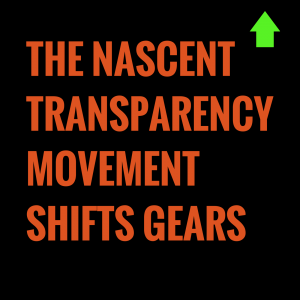 The transparency and sharing tradition carried over to iSPIRT. Nowadays, iSPIRT routinely shares the good, bad and ugly, often in the form of a “journeyline”, so that everybody in the ecosystem can learn from its experiences (see PNCamp’s example here). It even publishes its volunteer model so that other community efforts can build on its lessons. In fact, now, the concept of radical transparency is baked into iSPIRT’s guiding principles itself (alongside polycentric governance and open-access to public goods).
The transparency and sharing tradition carried over to iSPIRT. Nowadays, iSPIRT routinely shares the good, bad and ugly, often in the form of a “journeyline”, so that everybody in the ecosystem can learn from its experiences (see PNCamp’s example here). It even publishes its volunteer model so that other community efforts can build on its lessons. In fact, now, the concept of radical transparency is baked into iSPIRT’s guiding principles itself (alongside polycentric governance and open-access to public goods).


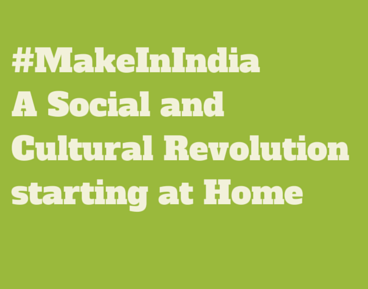 I feel “Make in India” must start in every home and in every primary school. Only if parents instill values, ethics, responsibility, respect for efforts, invest in developing comprehensive skills, environment awareness, and problem solving at a young age – the “Make in India” dream can become a reality. Parents and grandparents should go back to tell the stories that teach ethics and values in addition to kids growing up only watching Barbie’s, Ninja Hattori, and Harry Potter.
I feel “Make in India” must start in every home and in every primary school. Only if parents instill values, ethics, responsibility, respect for efforts, invest in developing comprehensive skills, environment awareness, and problem solving at a young age – the “Make in India” dream can become a reality. Parents and grandparents should go back to tell the stories that teach ethics and values in addition to kids growing up only watching Barbie’s, Ninja Hattori, and Harry Potter.





